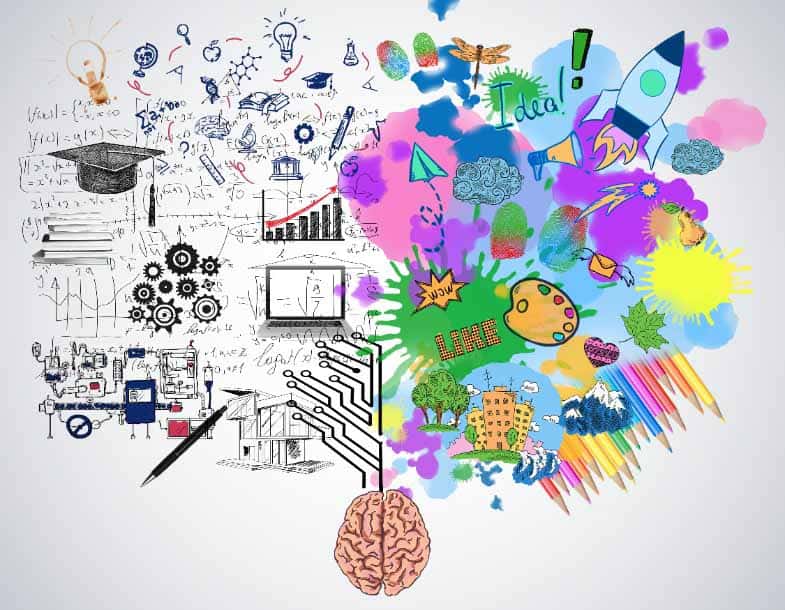American poet Emily Dickinson described the wonder of the human brain with a simple verse. Her verse, The Brain is wider than the Sky, tells about the brain’s marvelous capacities of thought and creativity.
“The Brain is wider than the Sky”
The Brain—is wider than the Sky—
For—put them side by side—
The one the other will contain
With ease—and You—beside—
The Brain is deeper than the sea—
For—hold them—Blue to Blue—
The one the other will absorb—
As Sponges—Buckets—do—
The Brain is just the weight of God—
For—Heft them—Pound for Pound—
And they will differ—if they do—
As Syllable from Sound—
The central control unit of our entire body and the repository of memories and emotions, the brain is the center of everything we think and do. In the past twenty years, an enormous amount of research has been conducted about our brains. Research on aging brains has taught us a lot and, in some cases, surprised us!

We once believed that humans used only 10% of their brain capacity at any time, suggesting that if we could use the other 90 percent, we might unlock amazing abilities. It remains unclear where this myth originated and how it spread so fast. The idea of tapping into unclaimed brainpower has always been very attractive. With the advancement of technology, we have learned that nothing could be farther from the truth.
We use all of our brain all of the time. According to Medical News Today, “brain scans have shown that we use almost all of our brain all of the time even when we’re asleep — though patterns of activity, and the intensity of that activity, might differ depending on what we’re doing and what state of wakefulness or sleep we are in.”
“Even when you’re engaged in a task, the rest of your brain is occupied doing other things, which is why, for example, the solution to a problem can emerge after you haven’t been thinking about it for a while, or after a night’s sleep, and that’s because your brain is constantly active.”
Left brain vs. right brain. You’ve probably heard of the “left brain, right brain” dominance theory. In the 1800s, scientists attempted to identify dominant personality traits with our brain’s left or right side. Supposedly, left-brained people are more logical, while right-brain people are more creative.
While this popular idea has been around for more than 200 years, it simply isn’t true. In reality, people use both parts of the brain equally, and logic and creativity are not mutually exclusive.
The early scientists were not wrong in their thinking, as it is true that each hemisphere of the brain controls different functions. Over time, we have learned that people simultaneously use both sides of their brains to solve complex problems, invent new things, or be innovative. A popular TED Talk, “Left Brain Right Brain Myth,” helps us understand these new concepts.
The brain changes with age. Our bodies continuously dispose of old cells and make new ones. For decades, scientists believed this cell turnover didn’t happen in aging brains. Recent studies with mice and humans have uncovered strong evidence that older brains make new cells (YAY!)
Researchers studied 28 postmortem, non-diseased brains of people ages 14 to 79 when they died. The researchers found that older brains had as many new cells as younger brains. In another study at Rockefeller University in New York City, researchers found that the hippocampus, a brain region associated with memories, learning, and emotions, continued to create new cells without the constraint of age or time.
Neuroplasticity. According to the theory of neuroplasticity, thinking and learning change both the brain’s functional anatomy and physical anatomy. First discovered in the 1970s by a Canadian psychiatrist, neuroplasticity has significantly affected brain-related diseases such as Alzheimer’s in the 21st century.
Diseases such as Alzheimer’s affect the connections between neurons resulting in tangled synapses. The good news is that we have billions of possible connections in our brains, and we can create new connections. What else have we learned?
- We know that the human brain can develop new brain cells. This means that tangled neurons can be bypassed, and new ones can be created. A human brain is like a jungle.
- Alzheimer’s and other types of dementia will invade the brain and begin to cut down the neurons and synaptic connections, like a weed-whacker cutting through the weeds around your house.
How about Alzheimer’s? According to the Alzheimer’s Association, “there is no cure for Alzheimer’s, but there are treatments that may change progression, and drug and non-drug options that may help treat symptoms. Understanding available options can help affected individuals and their caregivers cope with symptoms and improve quality of life.”
“Bouncing back” is the ability of the brain to change and grow in response to both positive and negative experiences. What can we do to strengthen our brains? According to A to Z of Brain, Mind, and Learning, the brain is plastic throughout life-it is constantly changing; what else can we do to strengthen our brain?
- Learn new things. Add learning to your daily calendar-don’t skip a day.
- Put information in context to our life experiences.
- When we see relationships between new information and our life experience, our brain generates new brain cell activity, and we achieve feelings of success.
- Pat yourself on the back. Resilience isn’t only about responding to past events and uncertainty about the future. It is also about acknowledging success.
- Make connections. Socialize, participate, give back and practice gratitude.
- Accept that change is a part of living.
- Nurture a positive view of yourself. Keep things in perspective.
